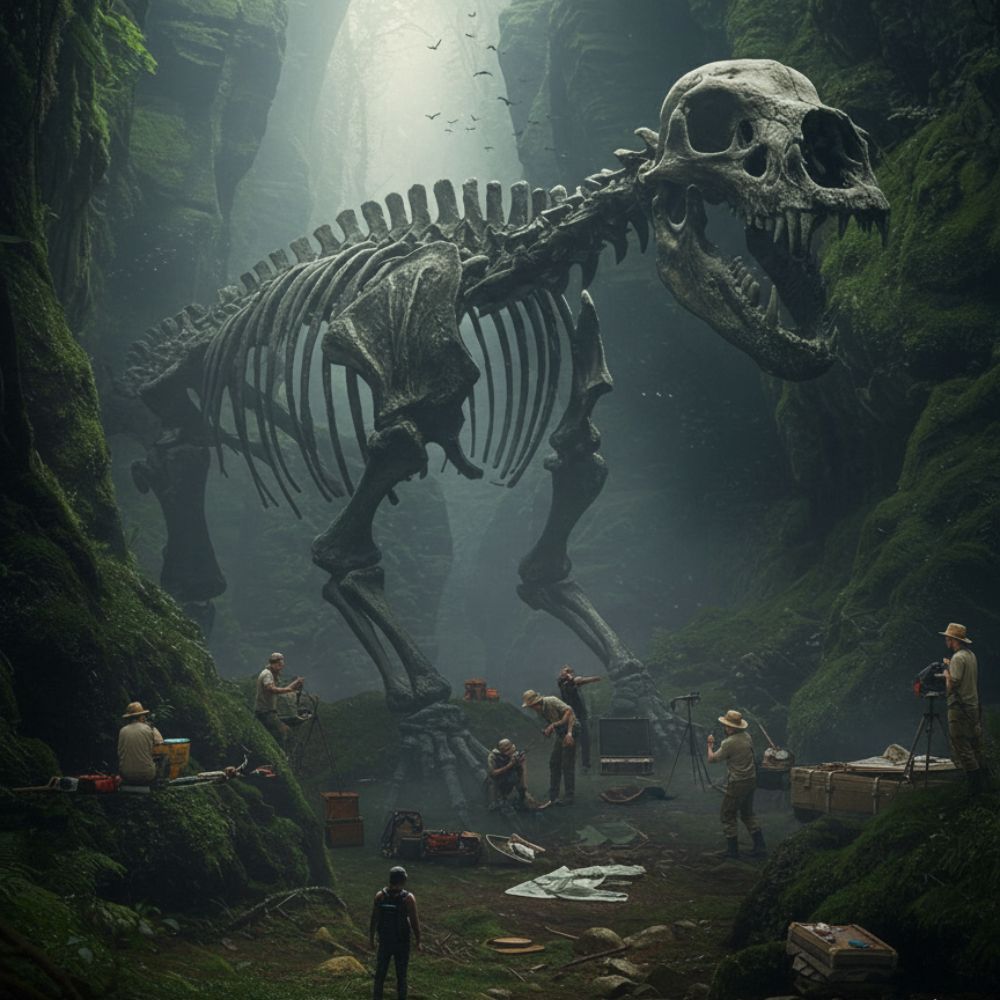Discovery in Danakil: The Leviathan of the Lost Canyon

The year was 2022. Decades of climate shifts had unveiled secrets long buried beneath the shifting sands and receding glaciers, but none as profound as what Dr. Aris Thorne and his team stumbled upon in the heart of the Danakil Depression. Often called “the hottest place on Earth,” this remote region of Ethiopia was known for its otherworldly volcanic landscapes and sulfurous springs, not for verdant canyons. Yet, a recent, unprecedented rain event, a geographical anomaly in itself, had scoured a previously uncharted chasm, revealing an anomaly of biological history.
“Are you seeing this, Anya?” Aris breathed, his voice barely a whisper above the faint hum of their drone, which had first flagged the anomaly. Anya Sharma, his lead paleontologist, adjusted her augmented reality glasses, her eyes wide with disbelief. Below them, nestled between towering, moss-covered rock walls that seemed to drink the rare moisture from the air, lay something impossible.
The team descended into the humid, primeval embrace of the canyon. The air grew thick with the scent of damp earth and unseen flora. As they navigated the slick, root-bound path, the scale of their discovery became terrifyingly real. There, rising from the misty floor, was the colossal, fossilized skeleton of a creature that defied known biology.
“My God,” whispered Dr. Chen, the team’s geochronologist, as he ran a trembling hand over a massive rib bone. “It’s not just big, it’s… unlike anything we’ve ever categorized.” The skeleton, dark and weathered, resembled a monstrous, bear-like quadruped, its skull a terrifying mosaic of bone and gaping sockets, teeth like sharpened daggers. It stood twenty meters high at the shoulder, a leviathan of an ancient world.
The following weeks were a blur of meticulous excavation and feverish speculation. Tents sprang up around the skeleton, generators hummed, and the canyon, once silent, echoed with the clink of tools and hushed scientific debate. Dr. Sharma’s team carefully brushed away millennia of sediment, documenting every vertebra, every phalange. Dr. Chen’s initial dating placed the fossil in the late Miocene, a period known for its burgeoning mammalian megafauna, but nothing on this scale, nor with these morphological characteristics.
“It’s not just a new species,” Anya declared during one evening’s debrief, huddled under the canvas fly. “It’s an entirely new order, perhaps even a class. Its bone density, the unique cranial structure… it suggests an apex predator adapted to an environment we can barely comprehend.” The creature, which they unofficially nicknamed “Danakil Bear-Dog” for lack of a better term, posed more questions than answers. How did such a massive land animal thrive in a prehistoric Danakil that, even then, was trending towards aridity? What was its prey? And how did its bones remain so perfectly preserved in a region of such intense geological activity?
As the sun set, casting long, dramatic shadows across the canyon, Aris often found himself standing alone before the skeleton, a mere speck at its feet. The ancient leviathan, silent and imposing, was a stark reminder of Earth’s unimaginable past, a testament to evolution’s boundless creativity, and a humbling monument to the secrets still waiting to be unearthed in the deepest, most forgotten corners of our world. The Discovery in Danakil was not just a find; it was a rewriting of history, a whisper from a time when giants truly walked the Earth.
